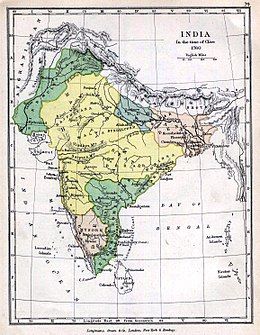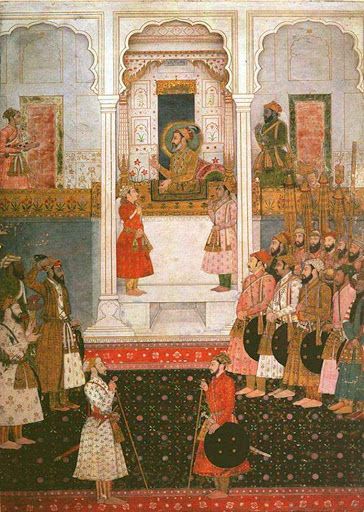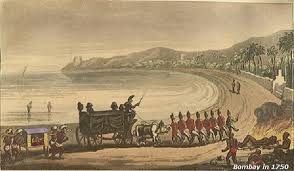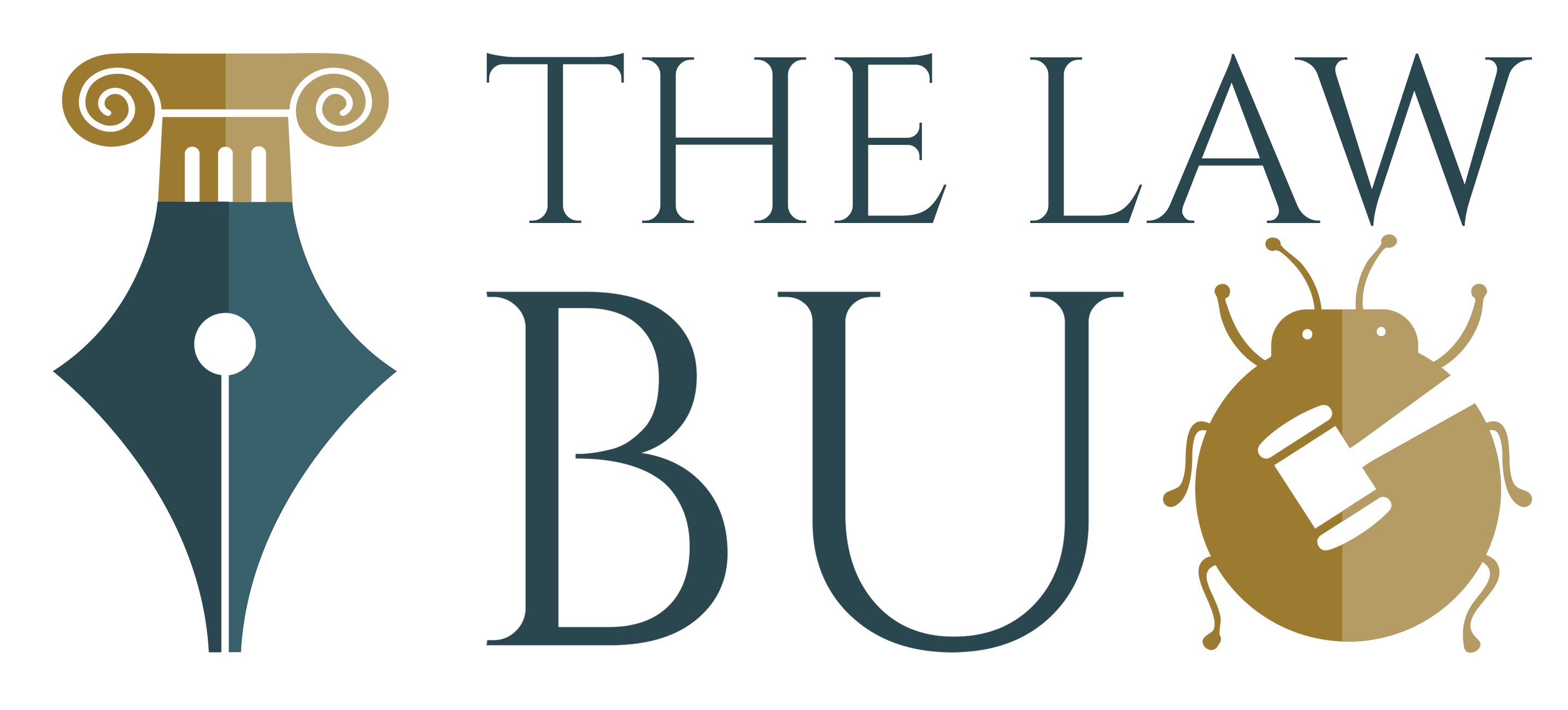The Indian Legal History- from the times of Origin of State to the English East India Company - PART-2 (Medieval India)

Learning is a plant that grows in all climes- Akbar
Towards the end of the 11th century , there was a downfall in the Hindu-Ruling kingdoms. The local rulers who ruled small kingdom states were attacked and were defeated by forgeign invaders of Turkish origin. It is important to understand the Muslim invaders came to conquer India. It was in the 8th century A.D for the first time, the Muslims of Arabia conquered India and subequently continued to rule over this country for a vast period of 700 years and gradually started to spread their religion to India and Sindh which became the first province to receive the impact of Islam.

After successive invasions by Ghazni, Mohammad Ghori attacked India, defeated Prithvi Raj, a Rajput King, in the year 1192 and occupied Delhi and subsequently with the departure of Ghori to Khurasan, left the Indian campign in the hands of his slave Qutub-ud-din-Aibak who established the Slave Dynasty and became the first Muslim king to Rule from Delhi. Subsequently, the Khiljis (A.D. 1290-1320); the Tughluqs (A.D. 1320-1414); the Syeds (A.D. 1414-1450); the Lodhis (A.D. 1451-1526) ruled as Sultans of the Delhi Sulatanate. In A.D.1526, Babur defeated Ibrahim Lodhi in the first Battle of Panipat and established the Mughal Empire and with the coming of the Mughals , the contact between Hinduism and Islam in India has led to a new sysntheis and of cultures, legal ruling personal laws and religions. There were a few Hindu Kingdoms who also existed in some part of the Nation state. Among these, the Vijayanagar Empire from A.D. 1336-1646 was the popular one. Krishnadevaraya was one of the greatest ruler of this dyansty. Their system of Criminal justice indicates the functioning of full-fledged judicial system but as the medieval period was highly influenced by the Muslim Rulers and their criminal justice system, Hindu ruling dyanasties didn't sustain long. The Ahom Dynasty that ruled in Assam for nearly 600 years is also discussed in brief as to how severe and rigid the Ahom law was.
Before proceeding to the Judicial aspect of the Medieval India, it is important to known the background history of the Invasions that took place which led to the establishment of a Non-Hindu ruling period in India which influenced the Judicial System of India heavily during the Medieval times.
INAVSION OF SIND BY MUHAMMAD-BIN KASIM
Muhammad-Bin-Kasim reached Debal (Karachi, Pakistan) in 712 A.D. with a total strength of 25,000 troops. For 3 days a fearful carnage continued. The Brahmans were forced to accept Islam and on their refusal they were mercilessly murdered The fall of Debal was the signal of the Arabs rule in India.

Results of the Arab Conquest of Sind:
- Sind was destined to sow the seed of Islam in this land.
- The Brahmin and Buddhist scholars educated Arab ruling elite in Indian Philosophy, law, languages and sciences.
- It facilitated the dissemination of the seeds of Indian Culture in foreign lands.
- Opened up a new chapter of cultural contact between India and Arabia.
MAHMUD OF GHAZNI
Mahmud secured his sovereignty from the Caliph of Baghdad in 971 A.D. Mahmud’s court historian, Utbi, looked upon Mahmud’s expedition to India as Jehad that is holy war for the extirpation of idolatry and propagation of Islam.
Causes of his invasion:
- To satisfy his ambition of conquest and extending his empire to India. He invaded 17 times but annexed only Punjab.
- He was anxious to amass wealth and since he had heard of the fabulous riches of Indian temples like that of Somnath, he wanted to loot them.

Mahmud’s Indian Expedition:
- Mahmud of Ghazni during his reign of 33 years, invaded 17 times.
- First Invasion – Capture of Frontier Forts -1000 A.A.
- Second Invasion – Defeat of Jaipal 1001-1002 A.D (Punjab and Kabul)
- Conquest of Bhira – The Hindu Ruler Bijai Rai stabbed himself to death.
- Conquest of Multan 10005-1006 A.D.
- Invasion against Trilochanpala
- Conquest of Thaneshwar
- Expedition against Kashmir – 1015-1021 A.D.
- Expedition against Mathura and Kanauj-1018-1019 A.D.
- Conquest of kalinjar 1020 A.D.
- Conquest of Gwalior
- Plunder of Somnath 1025-26 A.D – kathiawad in Gujarat
- Mahmud died in 1030 A.D.
MUHAMMAD OF GHOR
Muhammad Ghori is given the credit of laying the foundation of the Delhi Sultanate.
Conquests
- Conquest of Multan and Sind: 1175 A.d
- The conquest of Punjab: 1179,1181,1185,1186.
- Struggle with Prithvi Raj Chauhan:
- First Battle of Tarain– 1191 A.D – Prithvi Raj won the battle.
-The Second battle of Tarain– 1192 A.D – Muhammad Ghori won the battle.

Effects of Muhammad Ghori’s Invasion:
- Exposed the military weakness of the Indian rulers.
- Led to the revival of Indian trade with Arab nations. Ex. Uniformity of the taxation system, growth of cities and trade. The legal aspect took a turning point from this period.
- Muslim preachers got an extensive region for the spread of Islam.
- Led to urban revolution under the impact of the Turks.
- Coins issued by the Sultan became the only legal tender in the country.
LAW AND LEGAL INSTITUTIONS: SOURCES OF ISLAMIC LAW
The Islamic law was followed by the Sultans and the Mughal Emperors. The Islamic law is derived from four sources, viz., the Quran, the Hadis, the Ijma and the Qiyas. Quran was essentially a religious book. So, many of its declarations relating to cases arising social life were not clear. But Muhammad, who was a man of revelation, could easily interpret such statements with authority.

After his death the Khalifas could not follow in the footsteps of the Prophet in this respect. Hence the utterances of the Prophet, the traditional sayings of Muhammad, were compiled for the guidance of the people and rulers in the administration of Justice relating to different types of legal cases and issues. These are collectively called as the Hadis. Next to the Quran, the Traditions were of the highest value. The third souce of law or shariat was the Ijma or consensus of opinion, and Qiyas (analogy) constituted the fourth source.
With due course of time, people tend to forgot the real significance and interpretation of the Quran as well as of the Traditions. Different scholars now began to interpret them differently. This led to a large number of schools of law. But out all, only four of them became very important. They included both the fundamentalists and the rationalists.The four important schools of law of orthodox Islam were-
The Fundamentalists - the Hanafite School and the Malikite School
The Rationalists - the Shafiite School and the Hanbalite School
The first School was founded by Abu Hanifah (699-766 A.D) the second by Malik Ibn Anas (715-795 A.D), the third by Ash Shafi (767-820 A.D), and the fourth by Ahmad bin Hanbal (780-855 A.D). All the four important schools of Islamic jurisprudence were founded and developed outside India.
By the end of the 10th Century A.D even the work of interpretation and reinterpretation of the Islamic law came to a stop. The Indian Judges or Qazis had no authority to interpret and change such law according to the nature of the cases they were called upon to deal with.
LEGAL JUSTICE SYSTEM UNDER THE DELHI SULTANATE
Under the Sultanate Dyansty, five types of judicial institutions were engaged in administering justice . The Sultan was directly associated with the first three types of judicial institutions through - Diwan-i-Qaza, Diwan-i-Mazalim & Diwan-i-Siyasat, which dealt with specific kinds of cases relating to important disputes between the Sultan's subjects, those relating to bureauracy, and those relating to the military matters.
The fourth type the Mukti or Amir (the governor of Province) was concerned with the general cases at the central and provincial levels. And the last type the Mazalim Court, consisted of judicial bodies administering Justice in towns and villages (the Diwan & the provincial Qazi).
JUDICIAL BODY
The Chief Qazi was the head of the judicial system or Chief Justice in ordinary civil and criminal cases. He was officially known as the Qazi-i-Mumlik. Under him there were Qazis in the province and the towns. In the towns besides the Qazis there were Kotwals, who had the power to try criminal cases in the first instance. In the villages the Panchayats dispensed justice.The functions of the Qazis were confined only to the ascertainment of the offences or crimes and the sentencing of punishment. The summoning of the parties and witness to the court and the execution of the judicial sentences did not come under his purview. These functions were performed by the department of the Amir-dad. The Amir-dad had his deputies in the provinces, and the official called Dadbek in the important towns where the Qazis were posted.

LEGAL JUSTICE SYSTEM UNDER THE MUGHAL DYNASTY
In Mughal India there were three kinds of law courts, viz, the courts of Religious law, courts of Common law, and the courts of Political cases. These courts had no controlling power over one another, but functioned independently of one another.The Qazi was in charge of the first kind of courts. The second category of courts was presided over by the governor, the subordinate local authorities, the tribal heads and the caste Panchayats. The third type was headed by the Emperor himself or his agents.
- In the courts of Religious law the Qazis administered the Shara or the sacred law. Only religious cases or cases relating to religion such as those relating to pious foundations (Waqfs), to family law or inheritance were tried in these courts. The Qazis had no power to interpret the Islamic law as they liked, but had to accept the interpretations of the earlier jurists. These were formally laid down by the Muftis, also called Mujtahids or Wakil-i-Shara.
- In the courts of Common law, which functioned at different levels, customs or unwritten codes of law were administered. The governors, or the Kotwal or the Faujdar or some other officers administered these laws with the help of caste elders and Brahmin experts. These courts had nothing to do with the Qazis. The Common law also had nothing to do with the Shar of Islam.
- In the Court of Political cases, offences against the State and against law and order were tried. Such offences included rebellions, disloyalty, theft, highway robbery and murders. The law applied here was known as Urf, which ordinarily meant customary law, but was now used as law for summary justice in trying political cases of various kinds. Here again the Qazi had nothing to do with these cases. They were tried either by the monarch or by his agents.

CRIME AND PUNISHMENT UNDER MUGHAL DYNASTY
Islamic Jurisprudence recognised three kinds of crime, viz.,
- Offences against God
- Offences against the State, and
- Offences against private individuals.
OFFENCES AGAINST GOD
To punish offences against God was the sole right of God, and the Qazi tried such cases according to Shara. The offences against the State such as rebellions, riots, etc., were punished by the lay judges of the State. In the case of the third kind of offences, it was largely a matter between private individuals and compensations were paid by the guilty persons to the injured party for the damage caused by the offence. Four types of Punishments were inflicted for various crimes, i.e., Hadd, Tazir,Qisas and Tash-hir.
- Hadd was ‘a punishment prescribed by Shara Law’. To inflict this punishment was the ‘right of God’ only. Hence this was unchangeable by human beings. The various kinds of punishment under the head of Hadd included stoning to death the culprits guilty of adultery, whipping 100 stripes for the crime of fornication, and 80 stripes for falsely accusing a married woman of the crime of adultery, and also for men guilty of drinking wine, and death for robbery with murder.
- Tazir signified punishment aimed at reforming the culprit. Under Tazir punishment was inflicted in four ways- Reprimanding publicly, dragging the culprit to the court exposing him to public contempt, and Imprisoning or exiling the culprit.
- Qisas means retaliation. This was a punishment to be inflicted by the way of retaliation by the injured or by the next of kin on the culprit in the case of murder or such other crimes Murders, assaults, etc.
- Tash-hir signifies public degradation as a kind of punishment. The Islamic jurisprudence is silent about this form of punishment. This consisted in some such things as- Shaving the head of the culprit,blackening his face, parading him publicly through the streets in such a humiliating condition and so on.
OFFENCES AGAINST THE STATE
The king was free to inflict any kind of punishment for the offences against State like Rebellions, disloyalty, non-payment of revenue etc. Torture and capital punishment were also resorted to. The offenders were put to death in several ways. They were trampled to death under the foot of the elephant, bitten by the deadly cobras, or bricked up in walls, or pressed heavily to death. Often their eves were put out or hands cut off. Death was the punishment for default in the non-payment of Jizya.
On many occasions Mughals took much liberty in prescribing punishments, sometimes even departing from the Shariat. For Ex: Akbar issued an order that arrows were to be shot at a man for theft.Under Aurangzeb thieves were often hanged to death. Akbar, Jahangir and Shah Jahan forbade the slaughter of animals on certain days of the week, the violation of this rule being an offence liable to punishment. Forcible conversion to Islam and forcible Sati, were declared illegal. Similarly marriages between cousins, child-marriages and polygamy became illegal under Akbar. These were not covered by the Islamic Law.
LEGAL JUSTICE SYSTEM UNDER THE VIJAYANAGARA EMPIRE
The Hindu society was divided into a number of castes, sub-castes and other sectarian groups. Each of these segmented groups had its own set of unwritten laws in the form of customs and traditions. With the change in the circumstances and with the passage of time the Smritis had to be interpreted and reinterpreted so as to suit the changed conditions. Hence came into existence the celebrated commentaries and the law-digests such as the Mitakshara of Vijnanesvara, the Parasaramadhaviyam etc.

A court of law was styled the Sabha. The Sabha was of two types, Mukhya and Amukhya. The Mukhya Court was one that sat regularly, otherwise it was Amukhya. A Mukhya court could be again of two kinds, Pratishthita and Apratishthita, i,e stationary or circuit court. Both the Pratishtita and Apratishthita courts could be either Sastrita courts or Mudrita courts. If the king personally presided over the court, it was termed Sastrita, if a judge appointed under the seal (mudra) of the king presided, it was known as Mudrita.
The highest court was situated at the capital and exercised both civil and criminal jurisdiction in the whole of the empire. Besides the emperor who acted as the Chief Justice, the judicial bench consisted of a Pradvivaka or a Prominent Judge, and Sabhyas or assessors who were generally two in number. Other members of the judicial staff were the Lekhakaor the bench clerk, the Ganaka or the accountant and the Sadhyapala or the court bailiff. The Lekhaka recorded the oral evidence produced by the litigants, the Ganaka calculated the amounts involved in law suits, and the Sadhyapala produced the litigants and the witnesses before the court and maintained order and discipline in the court. The kind could appoint his representative styled Pratinidhi to preside over the court. From the actual records we know that the emperor was the Chief justice of the Empire. But generally an independent officer acted as Chief Justice on behalf of the king. He was called Dandanayaka. In the provinces the provincial governors dispensed justice on behalf of the Kind. In the local areas the caste elders, the Panchayats, the temple trustees, the village assemblies and guild courts administered justice largely on the basis of the prevalent customary laws.
JUDICIAL PROCEDURE
In civil cases the litigants were allowed to send their representatives called Niyogis to speak for them. The Niyogis could be compared to the modern lawyers. First the statements of both the plaintiff and the defendant were collected. The document containing the complaints of, or the charges made by, the plaintiff, was known as the Pratijna and the answer given in writing, or the statement of his case, by the defendant was termed Uttaram. The court thereupon examined the statements of the litigants and the evidence of the witnesses. If the evidence was found insufficient and when human efforts failed to unravel the mystery of the cases, then they had an appeal to the supernatural power. Finally the judgement was delivered in a document called the Jayapatra signed by the judge.
LEGAL JUSTICE SYSTEM UNDER THE MARATHAS
The Maratha judiciary, like the other branches of administration, was much influenced in organisational matters by the Muslim traditions, but the basic ideas and features were derived from Hindu sources.The customary unwritten laws formed another important source. The laws administered by the Maratha courts of law included the law of marriage, the law of succession, the law of property, the law of adoption, the law of inheritance and the like. These were fashioned by the injunctions of the medieval law-givers as well as by the prevailing local customs.

JUDICIAL HIERARCHY
The Peshwa who acted in the name of the king enjoyed the highest judicial powers. The Nyayadhish, however, was the Chief Justice. He enjoyed jurisdiction in both civil and criminal matters. Those Subedars who had received mutaliki seal enjoyed an original jurisdiction. Although they were placed in charge of different Subhas they were mostly residing in or near Poona.
Petty cases were tried by officials called Mutsaddis. If the cases were very important, the Mutsaddis presented them to Nana Phadnis who usually referred them to the qualified judges. In the Parganas, Karyats and villages the courts were held as and when necessary. Some places such as Paithan, Satara, Pali, Poona, and Nasik were famous for dispensing justice. Important cases were generally brought to these places.
JUDICIAL PROCEDURE
A court of law was styled ‘Majlils’. The trial of a case in the local area itself was generally preferred. If the cases related to religious matters they were taken to special courts called Brahmasabhas or Jatisabhas. When the court assembled for trying a case, the plaintiff (Agravadi) presented his side of the case in writing (takrir). Then the defendant (Pashchimavadi) was sent for. When he presented himself before the court, the takrir of the plaintiff was read out to him. He was allowed to defend him by refuting the charges made against him, and the statement of his side of the case was carefully recorded. After the first statements of both the parties were heard, the plaintiff was again asked to give his replication (pursis) and the defendant his rejoinder (pursis).
The Jayapatra or Mahzar, according to the Hindu law-books was to contain a brief statement of the plaintiff and of the defendant, the evidence produced by them, the deposition of witnesses, the relevant discussions and arguments, the Smriti tests applicable, the opinion of the Sabhyas and the decision arrived at. The Chief Justice should then sign the Jayapatra and authenticate it by affixing the royal seal.
LEGAL JUSTICE SYSTEM UNDER THE AHOM DYNASTY
The Ahom Dynasty ruled in Assam for nearly 600 years from 1228 to 1826. The rule of this dynasty ended with the Burmese invasion of Assam and the subsequent annexation by the British East India Company following the Treaty of Yandabo in 1826.

Originally the Ahom did not have any written laws. According to Gunabhiram (Assamese Intellectual) “No written arrangement or working procedure existed for general administration or justice. These were carried on according to the common sense or norms of knowledge”. They followed some traditional principles, customs and practice of the Tais (Tai people refers to the population of descendants of speakers of a common Tai language. The Tai are scattered through much of South China and Mainland Southeast Asia, with some (e.g.Khamti, Ahom) inhabiting parts of Northeast India) as of the Siamese and the Shans.
There was the “Lengdon Code”. It is believed that Langdon- the supreme ruler of heaven gave some code to his predecessor, Khunlung and Khunlai. These codes were based on the concept of Universal justice and ethics prevailing among the Tais. It tried to uphold the high principles of ethics, justice and fair trail as the guiding factor in maintaining law and order in the land. It also emphasized that a criminal should not be killed at once without the fair trail. In the same time it realizes the value of inflicting punishment for offenders. It prescribes certain punishments for offences and states the conditions when the offender might be freed.

In civil cases a summary of the proceedings (sidhantapatra) was drawn and deliver to the successful party. Hamilton Buchanan observes that no person is put to death without an order from the king and that order is always communicated in writing and procured by a written account of the proceedings having been submitted to the royal consideration. Thus it clear that there were written record of a kind at least in criminal court.
The Ahom penal law, was severe and punishments were heavy even for trivial offences. This impression made the Ahom government unpopular. Particularly, during problematic period, there were gross abuse of the penal law and ruthless infliction of indiscriminate punishments.This naturally frustrated the masses.
CONCLUSION
With the advent of the English East India Company in India in 1600 started the new chapter of Judicial History of India and with the foundation of British Raj in 1858 became the most crucial phase for the Legal system in India which led to the coding of various important laws which still prevails to date. In the coming third and the last part of this series, we will see the the influence of the English East India Company into the Judicial sytem of India and how this will lead to the massive transmission of Legal System of India in the coming years.






